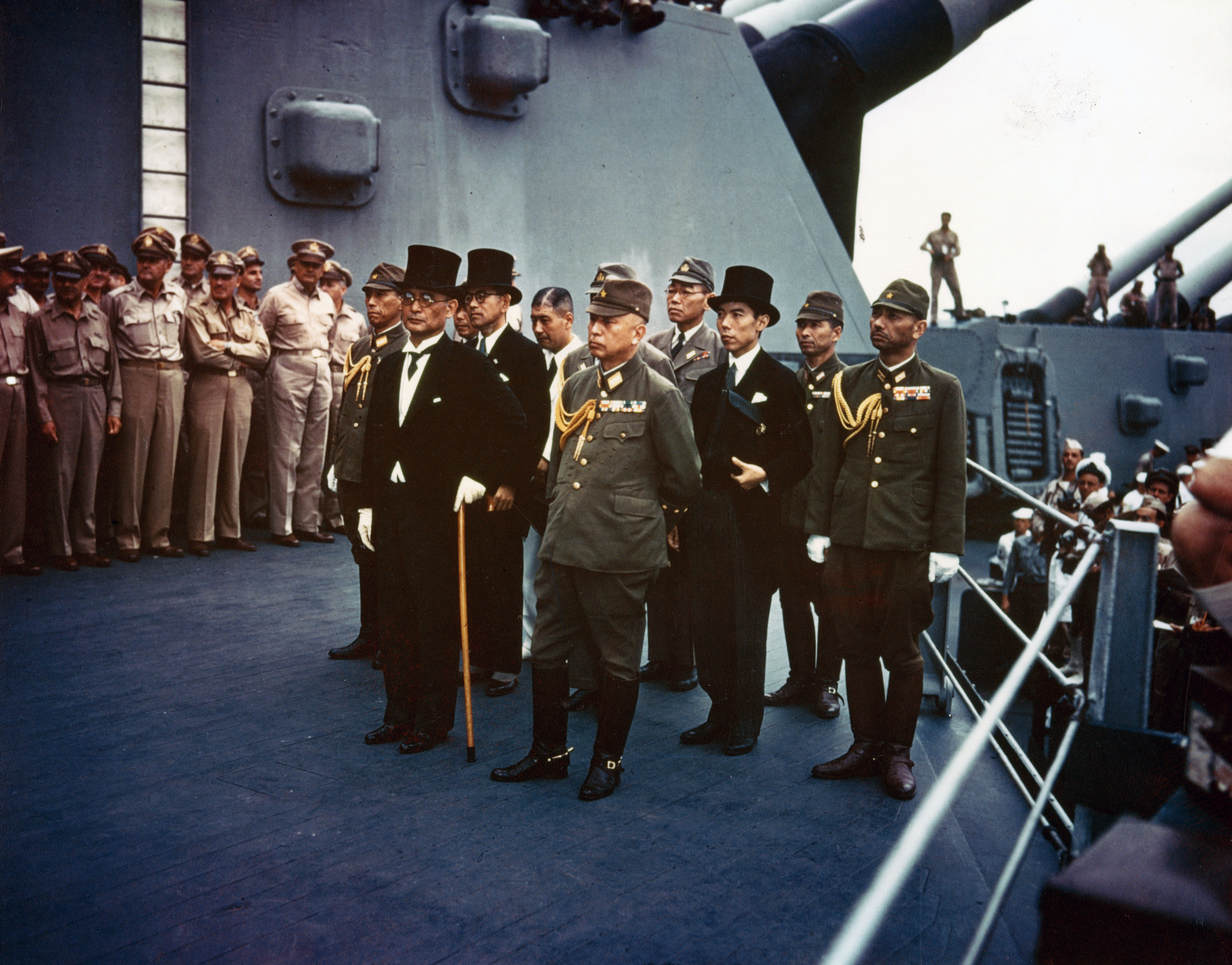Victory over Japan Day (also known as Victory in the Pacific Day, V-J Day, or V-P Day) is a name chosen for the day on which the Surrender of Japan occurred, effectively ending World War II, and subsequent anniversaries of that event. The term has been applied to both the day on which the initial announcement of Japan’s surrender was made in the afternoon of August 15, 1945 in Japan, and because of time zone differences, to August 14, 1945 (when it was announced in the United States, Western Europe, the Americas, the Pacific Islands, and Australia), as well as to September 2, 1945 when the signing of the surrender document occurred.
 August 15th is the official V-J Day for the UK while the official US commemoration is September 2nd. The name, V-J Day, had been selected by the Allies after they named V-E Day for the victory in Europe.
August 15th is the official V-J Day for the UK while the official US commemoration is September 2nd. The name, V-J Day, had been selected by the Allies after they named V-E Day for the victory in Europe.
On September 2, 1945 a formal surrender ceremony was performed in Tokyo Bay, Japan aboard the battleship USS Missouri. In Japan, the day usually is known as the “memorial day for the end of the war”. The official name for the day, however, is “the day for mourning of war dead and praying for peace” (Senbotsusha wo tsuitōshi heiwa wo kinennsuru hi). This official name was adopted in 1982 by an ordinance issued by the Japanese government.
Though the surrender ended WWII, VJ/VP Day evokes touchy issues and the observance has lost ground to other national salutes to war veterans. The 65th will see low-key observances across the region, scattered veterans’ parades and a ceremony aboard the Battleship Missouri Memorial here in Hawaii.
 Some countries in the region believe Japan has not paid dearly enough for its WWII actions. Other countries don’t want to offend Japan, an important trading partner, by observing the day. And VJ/VP Day stirs up the countries and groups that regard what the United States did to hurry the surrender — drop an atom bomb on Hiroshima and another on Nagasaki — as a war crime.
Some countries in the region believe Japan has not paid dearly enough for its WWII actions. Other countries don’t want to offend Japan, an important trading partner, by observing the day. And VJ/VP Day stirs up the countries and groups that regard what the United States did to hurry the surrender — drop an atom bomb on Hiroshima and another on Nagasaki — as a war crime.
The United States salutes its forces on Veterans Day and Memorial Day. Australia and New Zealand pull out all the stops for ANZAC Day on April 24th each year, and Canberra has added Battle for Australia Day to its national day calendar. Wartime prime minister John Curtin announced the Battle for Australia when Singapore fell on 15 Feb 1942. The new national day, in September, marks the turning point for Australia, which was under direct threat from the Japanese.
Emperor Hirohito signed the formal surrender on 2 September 1945 on the USS Missouri, which was at anchor in Tokyo Bay. The battleship, nicknamed “Mighty Mo,” was launched in 1944 and fought in the battles of Iwo Jima and Okinawa. It was decommissioned in 1955 but revived in the 1980s for a brief engagement in the 1991 Gulf War. Now the Battleship Missouri Memorial, “Mighty Mo” is moored in Pearl Harbor near the USS Arizona, a battleship that sank in the December 1941 Japanese attack with over 1100 sailors and Marines on board. (Last updated July 2010)

It is estimated that America lost just over 100,000 servicemen in the war in the Pacific.
There were 36,260 American POW’s in Japanese POW camps. Of these, 13,851 died whilst in captivity. Most of us are aware of the atrocities committed by the Japanese and it serves no purpose to reiterate them here. Having said that, and being mindful of the importance and healing power of forgiveness, we should never forget what happened. To do so would be to disrespect those who gave their lives.
As well as those who died as a result of atrocious treatment by the Japanese, there were 106,207 killed and 248,316 wounded and MIA. It’s these men and women who paid the ultimate price for our freedom.

